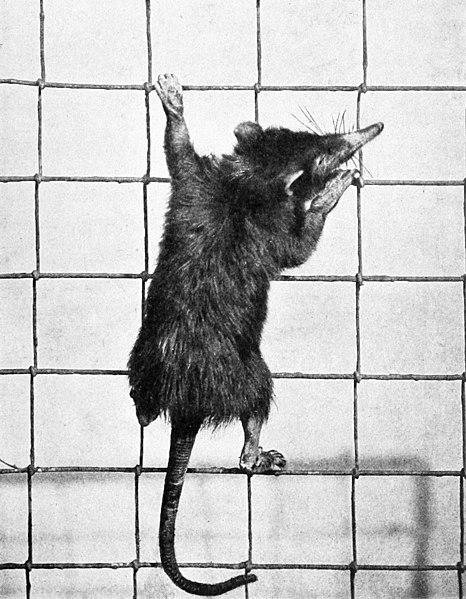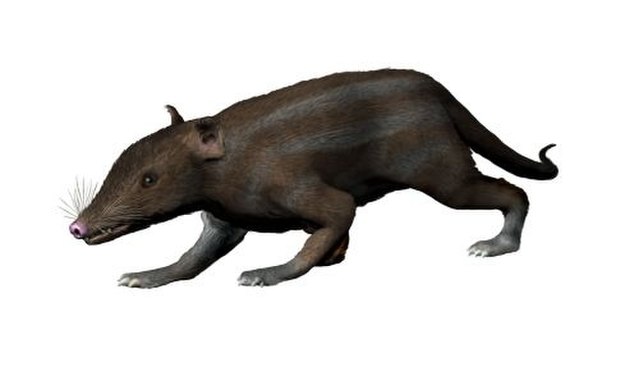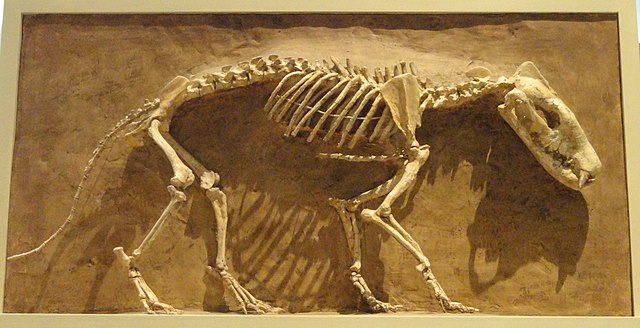Solenodons are venomous, nocturnal, burrowing, insectivorous mammals belonging to the family Solenodontidae. The two living solenodon species are the Cuban solenodon and the Hispaniolan solenodon. Threats to both species include habitat destruction and predation by non-native cats, dogs, and mongooses, introduced by humans to the solenodons' home islands to control snakes and rodents.
Image: Hispaniolan Solenodon crop
Image: Solenodon range
Cuban solenodon at New York Zoo
Image: Hispaniola solenodon
A mammal is a vertebrate animal of the class Mammalia. Mammals are characterized by the presence of milk-producing mammary glands for feeding their young, a neocortex region of the brain, fur or hair, and three middle ear bones. These characteristics distinguish them from reptiles and birds, from which their ancestors diverged in the Carboniferous Period over 300 million years ago. Around 6,400 extant species of mammals have been described and divided into 29 orders.
Restoration of Juramaia sinensis, the oldest-known Eutherian (160 mya)
Fossil of Thrinaxodon at the National Museum of Natural History
Hyaenodon horridus, a North American species of hypercarnivore within the now-extinct order Hyaenodonta, at the Royal Ontario Museum. The genus Hyaenodon was amongst the most successful mammals of the late Eocene-early Miocene epochs spanning for most of the Paleogene and some of the Neogene periods, undergoing many endemic radiations in North America, Europe, and Asia.
Sexual dimorphism in aurochs, the extinct wild ancestor of cattle








